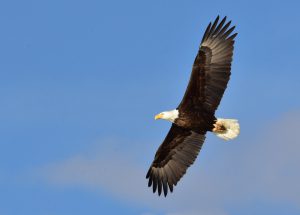Orioles are colorful members of the blackbird family (Icteridae), which also includes cowbirds, grackles, meadowlarks, bobolinks, and blackbirds.
Texas officially has 9 species of orioles, but two are significantly range-restricted (south-Texas specialties) and two are rare for the state.
Oriole Species found in Texas
- Baltimore Oriole
- Orchard Oriole
- Bullock’s Oriole
- Hooded Oriole
- Scott’s Oriole
- Altamira Oriole
- Audubon’s Oriole
- Streak-backed Oriole (rare)
- Black-vented Oriole (rare)
How to Attract Orioles to your Backyard
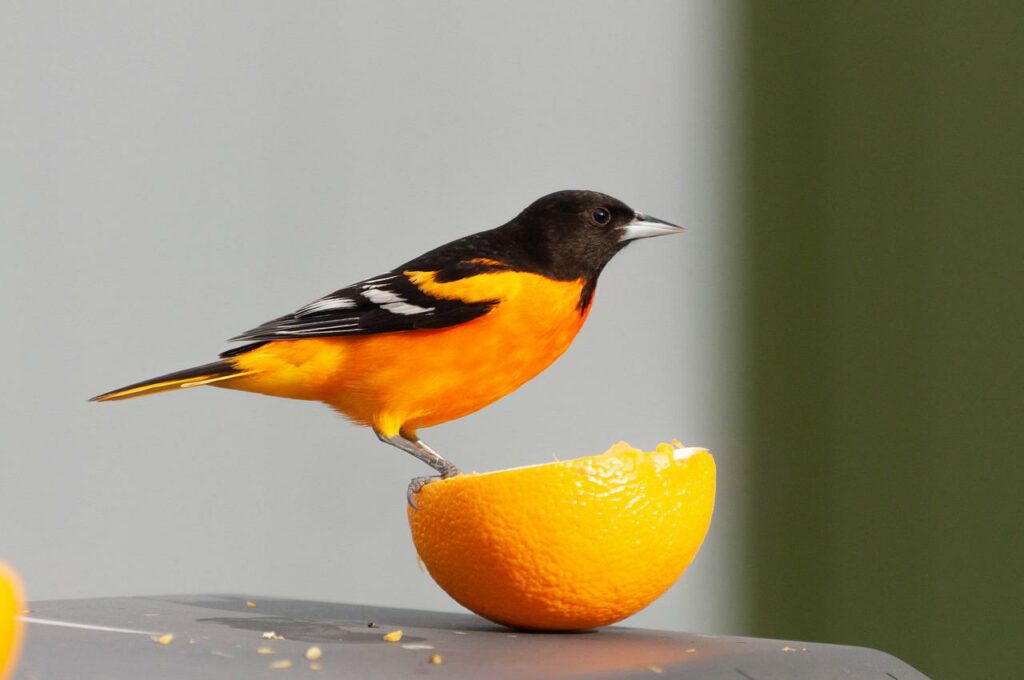
Orioles favorite backyard foods include grape jelly, nectar (sugar water), and orange halves. Grape jelly especially seems to get their attention.
For a good oriole feeder, here’s one I’ve personally had great success with (Amazon link).
Orioles don’t eat seeds, but they do have a major sweet tooth and love all things sugar.
You can also try slices of apples, peaches, bananas, and strawberries.
Make sure to refresh feeders often, as sugar foods will sour quickly in the Texas heat.
When do Orioles Show Up in Texas?
Most Texans see orioles during spring and fall migration.
April, May and September are the best months for orioles in the eastern two-thirds of the state.
Texans should place oriole feeders out from about April 20th through May 15th, and then again during the month of September.
Look up your area for when orioles show up.
| Location | Spring | Fall |
| Along the coast | Apr 10 – May 10 | Sept. 10 – Oct. 15 |
| Houston | Apr 12 – May 14 | Sept. 5 – Oct. 15 |
| San Antonio | Apr 14 – May 18 | Aug. 25 – Sept. 30 |
| Austin | Apr 14 – May 20 | Aug. 25 – Sept. 30 |
| Dallas | Apr 18 – May 15 | Sept. 1 – Sept. 25 |
| Far South Texas | (Present all year!) | (Present all year!) |
| Far West Texas | Arrive Apr 18 | Depart Oct. 20 |
| Panhandle | Apr 16 – May 5 (uncommon) | September (uncommon) |
Baltimore Oriole

- Males are bright orange with a black head and back
- Females are grey and yellow-orange
- Seen during spring & fall migration
Baltimore Orioles move through Texas during spring migration (April to May) and fall migration (September to October). Some breeding pairs may be found in northeastern Texas during summer.
This species likes open woodlands, forest edges, and river banks. They can be found in wooded parks and backyards.
Be careful not to confuse this with the Orchard Oriole, which is a much darker orange color.
Orchard Oriole

- Males are reddish-brown with a black head
- Females are greenish-yellow
- Present from April through September
- Breed throughout most of the state
Orchard Orioles are typically found from April to September. They breed throughout most of the state, and can be found during migration in the few places they do not breed (west and southern Texas).
You might find this species in tall trees in woodlands, hedgerows, and neighborhoods, especially near water.
The males are easy to identify because of their red-brown color.
Bullock’s Oriole
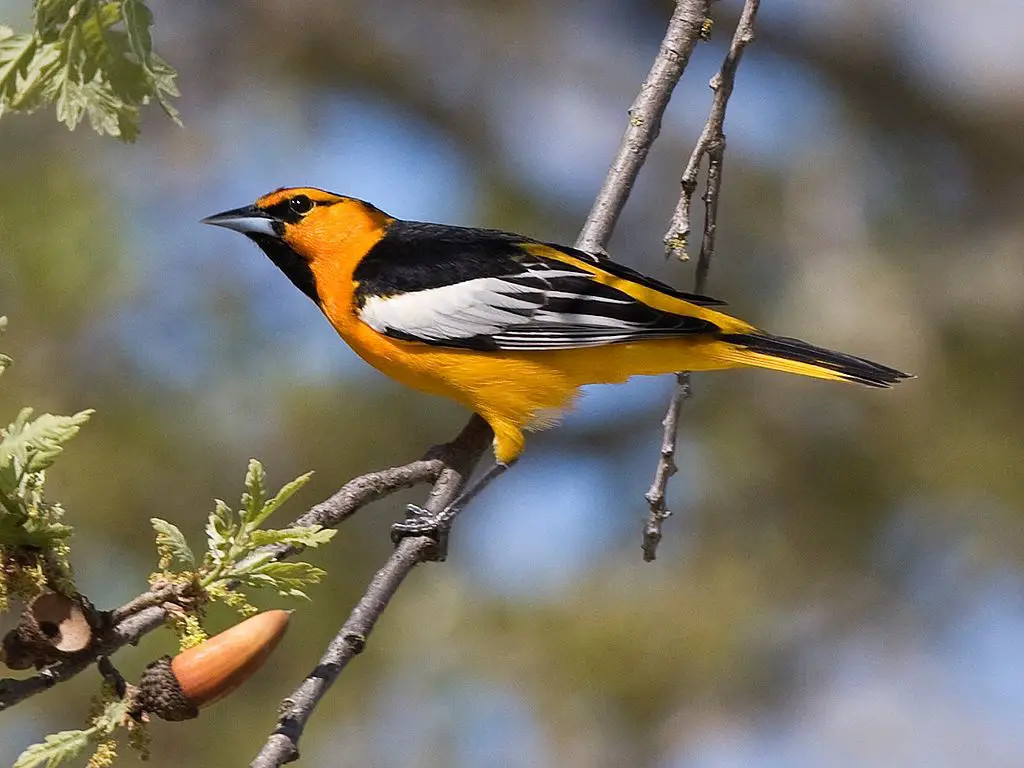
- Present late April through August
- Males are bright orange with white on the wings
- Females are a muted orange with a white belly
- Occurs in the western half of Texas
Bullock’s Orioles breed from around San Antonio and Abilene west through the deserts and high plains of Texas. Expect them to be here April through September.
This species can be found in woodlands, especially near water, including urban parks. This species likes trees that are even larger than Orchard Orioles.
The brightly colored head with a black cap and line through the eye distinguish this species.
Hooded Oriole

- Males are bright yellow-orange with a yellow head, and a black face
- Females are pale yellow
- Found in South Texas, extending along the border into west Texas
Hooded Orioles occur in Texas from March to September, and are most likely to be found from Fort Stockton to San Antonio, and south along the border. They are uncommon in the west Texas deserts.
Hooded Orioles can be found in dry open woodlands, and they especially love palm trees.
The yellow head with a black mask distinguishes this species.
Scott’s Oriole
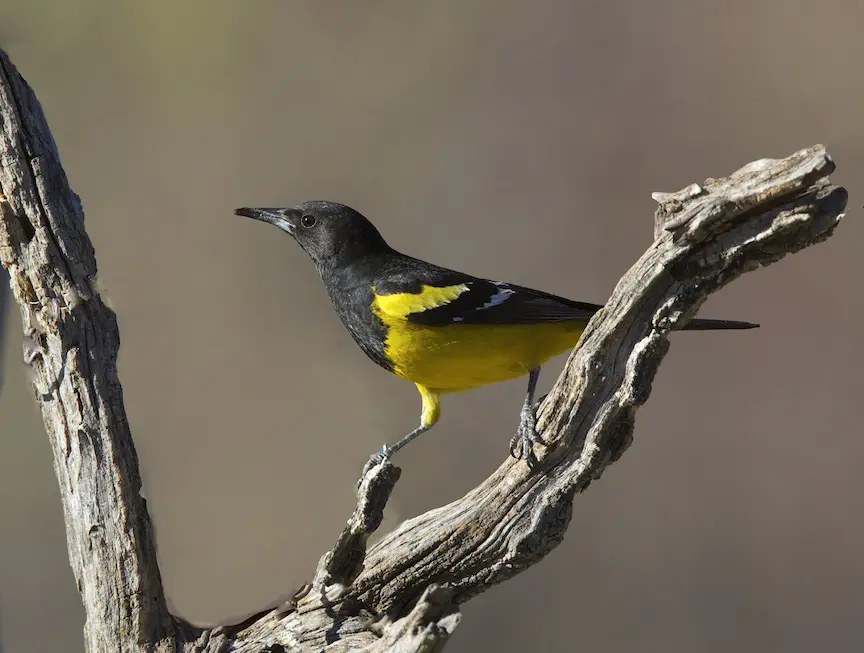
- Males are bright yellow with a black head
- Females are a dull grey and yellow
- Breeds in west Texas deserts
Scott’s Orioles can be found around Yucca plants, junipers, and Live Oaks along high slopes throughout deserts and the central Texas Hill Country.
This species is known for being frequent singers, and may be the first song heard each day before sunrise. Songs can be heard all day throughout summer, and females also sing.
This species is less common at feeders, but may come in for nectar.
Altamira Oriole
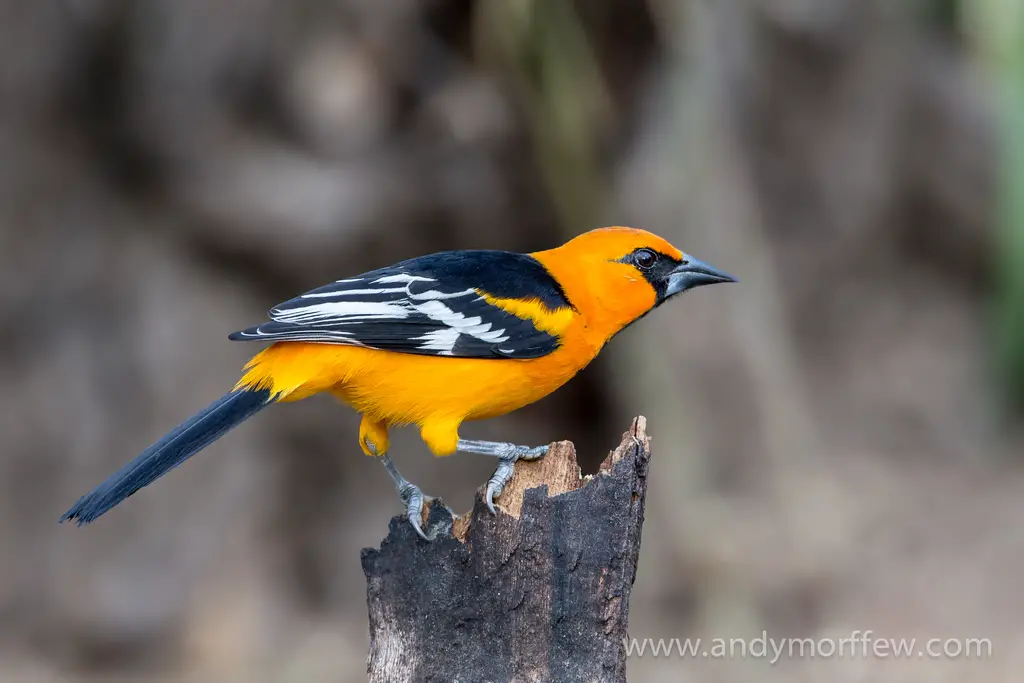
- Males and females are bright orange with a black face
- Restricted to South Texas
- Year-round
This species likes open woodlands of parks, refuges, farms, and waterways and can be found in the south Texas Rio Grande Valley year-round.
This species is not sexually dimorphic, meaning males and females look the same.
Notice how similar they are to male Hooded Orioles, but the face mask is smaller and more pointed. Additionally, the shoulder patch is yellow/orange, while Hooded Orioles have a white shoulder patch.
Audubon’s Oriole
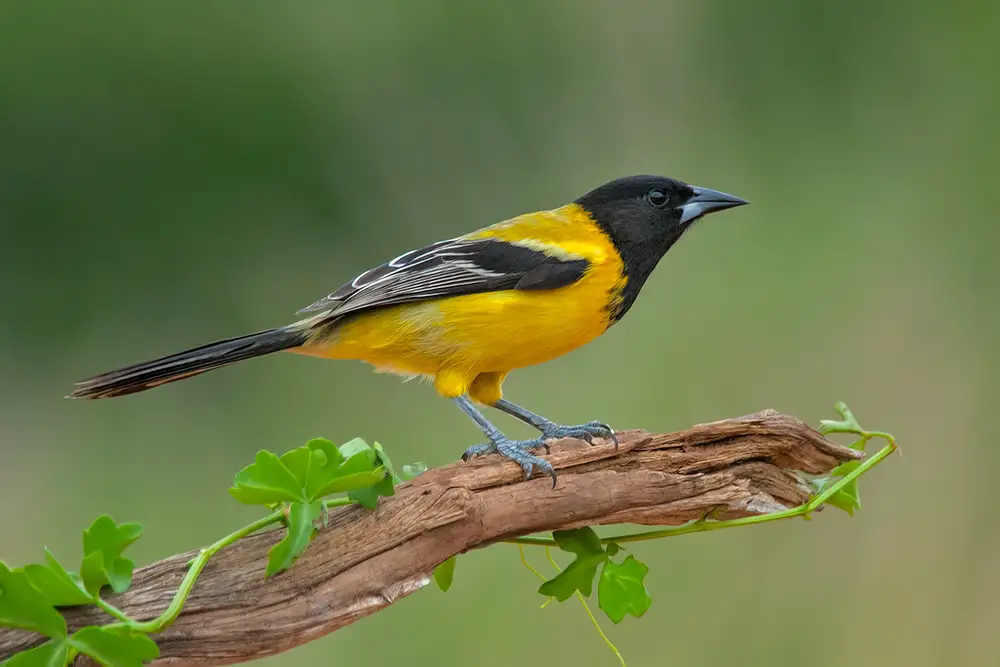
- Bright yellow with all black head
- Restricted to South Texas
- Year-round
Audubon’s Orioles are the most range-restricted species, except for the rare vagrants described below. But, they can be found in those locations year-round.
This species is also not sexually dimorphic, meaning males and females look the same.
This species can be found in low brushy habitats, especially along streams and creeks.
This species can easily be identified by its distinctly yellow back.
Rare Orioles
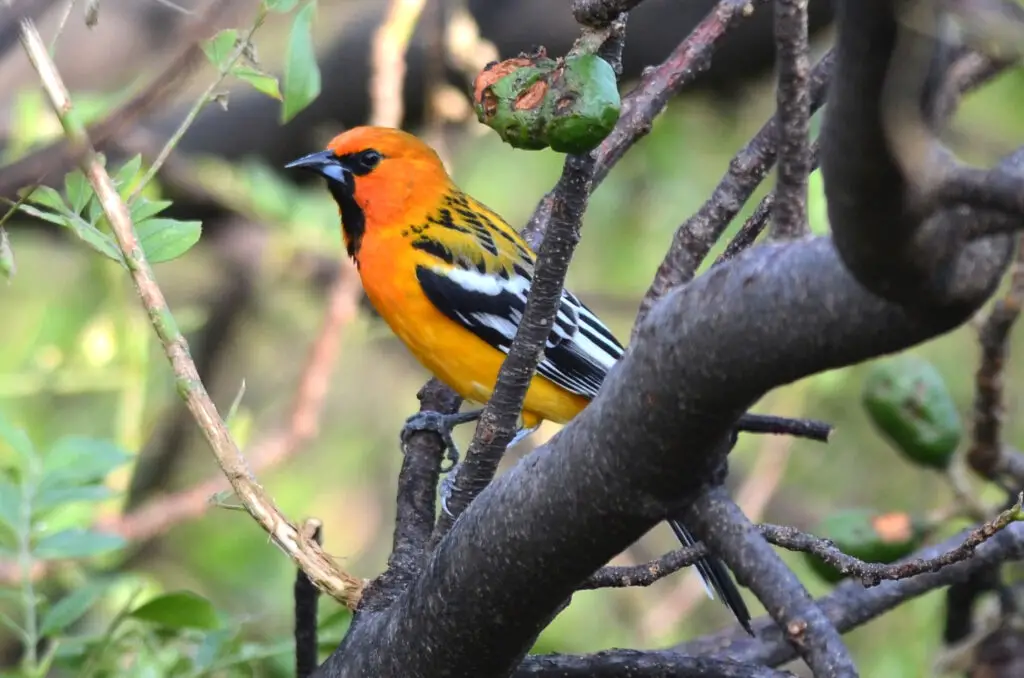
The Streak-backed Oriole resides south of the US border, but individuals have occasionally appeared in south Texas and Big Bend country. This orange and yellow species has black/grey streaks along the back instead of a solid black color, and looks most similar to Hooded Orioles.
The Black-vented Oriole is similarly a rare south-of-the-border species that looks most like a Scott’s Oriole, with a black head and upper body, a yellow belly, and a distinct lack of white wing bars (wings are entirely black).



